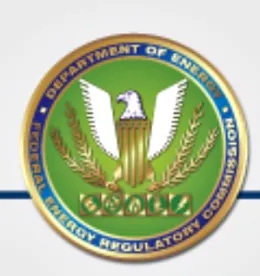Last week the Federal Energy Regulatory Commission (FERC) issued an Order Approving Stipulation and Consent Agreement involving High Desert Power Project, LLC (High Desert) and Middle River Power LLC. (Middle River) to resolve allegations of market manipulation in the California Independent System Operator (CAISO) market. The settlement is noteworthy because it involved allegations of market manipulation that were completely absent of any attempt to influence market prices or to send false signals to the market. This instead is one of the purest examples of FERC taking the position that its market manipulation rule prohibits taking advantage of market design or commitment/dispatch errors (i.e., “gaming”) even when the market is put on notice of the issue. The order should serve as a warning to anybody thinking the current Commission may not embrace this broad theory of manipulation.
High Desert leases and operates an 830 MW gas-fired, combined cycle facility in California. High Desert’s affiliate, Middle River, makes decisions on behalf of High Desert, and High Desert had engaged an asset manager to act as Scheduling Coordinator in the CAISO market.
High Desert routinely submitted offers to sell Residual Unit Commitment (RUC) capacity in CAISO’s day-ahead market as a price-taker for quantities less than or equal to its Resource Adequacy (RA) obligation. Beginning on October 16, 2016, High Desert began offering RUC capacity in quantities above its RA obligation at positive prices. On October 20, 2016, High Desert received a RUC award for one hour despite its offer price ($149.98) being above the clearing price.
High Desert’s asset manager submitted a Customer Inquiry, Dispute & Information (CIDI) ticket that (1) asked how such an award was possible, (2) claimed High Desert should receive a Bid Cost Recovery (BCR) make-whole payment, and (3) estimated the payment amount. On October 24, CAISO informed High Desert that the October 20 award was the result of a software issue that CAISO was working to correct. High Desert continued to submit RUC offers and receive awards above the clearing price from October 22 – November 1, 2016. After learning of the software issue, High Desert raised its RUC offer prices for the following day to just below the offer cap ($250) and continued to offer at or near the cap through November 1 while clearing prices ranged from $0 - $40. The asset manager submitted four more CIDI tickets on High Desert’s behalf, stating that the awards meant High Desert should be kept whole to its RUC offer prices and estimating the amounts of the payments.
FERC staff concluded that High Desert “knew or should have known that High Desert’s potential BCR payments were based upon RUC awards that CAISO was awarding by mistake – due to a software issue.” It further concluded that, “despite these circumstances, rather than continue to submit RUC offers based upon supply and demand fundamentals, High Desert submitted RUC offers in a manner that sought to maximize any BCR that might be awarded in violation of [FERC’s anti-manipulation rule].” High Desert agreed to pay a civil penalty of $390,000 and to disgorge $176,000 plus interest.
Takeaways:
FERC defines “fraud” broadly to include “any action, transaction, or conspiracy for the purpose of impairing, obstructing or defeating a well-functioning market.” In other words, taking advantage of any market design flaw or other errors or mistakes in an organized market may be viewed as fraud and a violation of FERC’s anti-manipulation rule. Organized markets often yield unexpected results, and errors by market operators often can lead to awards and dispatch instructions that do not comport with the fundamentals of supply and demand. Any time this happens, it is a compliance moment. Taking advantage of the error, or taking steps to reverse the error (i.e., self-help), may result in allegations and penalties against the market participant.




 />i
/>i
